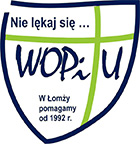Poradnia Uzależnień i Współuzależnienia w Łomży
Poradnia oferuje bezpłatną pomoc dla osób uzależnionych od środków psychoaktywnych (alkohol, narkotyki, leki) oraz uzależnionych behawioralnie (hazard, seks, zakupy, praca, internet/komputer) i członków ich rodzin – osób współuzależnionych oraz osób z syndromem Dorosłego Dziecka Alkoholika.
Do Poradni można zgłaszać się osobiście od poniedziałku do piątku w godzinach 8.00-20.00, dzwoniąc na numer (86) 216 67 03. Na pierwszą wizytę wymagany jest dokument tożsamości a także dokumentacja medyczna z poprzedniego leczenia.
Do zadań Poradni należy:
- diagnozowanie zaburzeń spowodowanych używaniem alkoholu i/lub innych substancji psychoaktywnych, zaburzeń behawioralnych,
- diagnozowanie zaburzeń występujących u członków rodzin osób uzależnionych,
- realizacja programów korekcyjnych dla osób pijących ryzykownie i szkodliwie,
- realizacja programów psychoterapii dla osób uzależnionych od alkoholu i innych środków psychoaktywnych,
- realizacja programów psychoterapii dla członków rodzin osób uzależnionych,
- udzielanie indywidualnych świadczeń dla osób uzależnionych i członków ich rodzin.
Celem Poradni jest:
- niesienie pomocy osobom cierpiącym,
- udzielenie wsparcia psychologicznego,
- poprawa jakości życia osób korzystających z psychoterapii,
- wypracowanie długoterminowej stabilizacji abstynencji,
- pomoc w lepszym rozumie siebie i swoich emocji, zachowań,
- wzmocnienie motywacji do zmiany,
- wspieranie działań zmierzających do poprawy jakości życia (działań prozdrowotnych i prospołecznych).

Oferta dla osób uzależnionych
Poradnia przyjmuje osoby ubezpieczone i nieubezpieczone. Podjęcie terapii nie wymaga skierowania. W Poradni prowadzona jest profesjonalna psychoterapia dla uzależnionych na etapie podstawowym oraz pogłębionym. Ambulatoryjny program psychoterapii dla osób uzależnionych podzielony jest na III etapy: I- etap wstępny tzw. edukacyjno-motywacyjny (trwa 2-4 tygodnie), II etap podstawowy trwa do 12 miesięcy), III etap pogłębiony (trwa 12-24 miesiące). Pierwszym etapem działań jest proces diagnostyczny, który w naszej palcówce trwa około miesiąca i obejmuje konsultację psychiatryczną i psychologiczną-terapeutyczną. Po odbyciu tego etapu z osobą ustalany jest indywidualny plan leczenia. Psychoterapia odbywa się w formie spotkań indywidualnych i grupowych zgodnie z harmonogramem.
HARMONOGRAM ZAJĘĆ GRUPOWYCH DLA OSÓB UZALEŻNIONYCH
| RODZAJ GRUPY | PONIEDZIAŁEK | WTOREK | ŚRODA | CZWARTEK | PIĄTEK |
|---|---|---|---|---|---|
| GRUPA EDUKACYJNO – MOTYWACYJA | 18.00-19.00 | 18.00-19.00 | |||
| GRUPA TERAPEUTYCZNA | 17.00-19.00 | 17.00-19.00 | |||
| GRUPA ZAAWANSOWANA DLA OSÓB UZALEŻNIONYCH | 18.00-20.00 | ||||
| GRUPA DLA OSÓB Z DEFICYTAMI POZNAWCZYMI – OD WRZEŚNIA | 10.00-11.00 |
- psychoterapii indywidualnej,
- psychoterapii grupowej: grupie nawrotów dla osób uzależnionych, treningu umiejętności zachowań konstruktywnych.
Oferta dla członków rodzin osób uzależnionych, z syndromem DDA
Psychoterapia dla członków rodzin osób uzależnionych prowadzona jest w trzech etapach. W pierwszym etapie przeprowadzony jest proces diagnostyczny, który trwa około miesiąca i obejmuje konsultację psychiatryczną i psychologiczną. Po zakwalifikowaniu do terapii ustalany jest indywidualny plan leczenia, który obejmuje psychoterapię indywidualną oraz grupową i będzie trwać w zależności od wskazań 12-24 miesiące. Terapia indywidualna odbywa z częstotliwością jednego spotkania indywidualnego i grupowego tygodniowo.
HARMONOGRAM ZAJĘĆ GRUPOWYCH DLA CZŁONKÓW RODZIN OSÓB UZALEŻNIONYCH-WSPÓŁUZALEŻNIONYCH
| RODZAJ GRUPY | PONIEDZIAŁEK | WTOREK | ŚRODA | CZWARTEK | PIĄTEK |
|---|---|---|---|---|---|
| GRUPA WSTĘPNA | 17.30-19.30 | ||||
| GRUPA ROZWOJOWA | 17.30-19.30 | ||||
| GRUPA POGŁĘBIONA | 17.30-19.30 |
ZESPÓŁ TERAPEUTYCZNY
Adam Kołakowski: Koordynator Poradni, specjalista psychoterapii uzależnień – certyfikat PARPA nr 883, psychoterapeuta w trakcie szkolenia do uzyskania certyfikatu, absolwent 4-letniego Kursu Psychoterapii w Polskim Instytucie Ericsonowskim w Łodzi.
Renata Szymańska: Psycholog, specjalista psychoterapii uzależnień certyfikat PARPA nr 1123, absolwentka 4 letniego Kursu Psychoterapii Ericksonowskiej w P-I-E w Łodzi i Studium Dialogu Motywującego w Toruniu.
Danuta Brzezińska-Furman: Pedagog, specjalista psychoterapii uzależnień, certyfikat PARPA. Ukończyła Studium Socjoterapii, Studium Terapii Uzależnień w kierunku pracy z młodzieżą uzależnioną i zagrożoną uzależnieniem – Certyfikat.
Sylwia Kołakowska: Psycholog, specjalista psychoterapii uzależnień certyfikat PARPA nr. 512. Ukończyła i prowadzi „Szkołę dla rodziców i wychowawców”.
Danuta Kozłowska: Specjalista psychoterapii uzależnień z certyfikatem PARPA nr 1794. Ukończyła Studium Dialogu Motywującego w Toruniu.
Paweł Dusza: Pedagog, specjalista psychoterapii uzależnień certyfikat PARPA nr 1769, posiada certyfikat CANDIS, FRED.
Małgorzata Załuska: Psycholog Kliniczny, certyfikowany specjalista psychoterapii uzależnień, psychoterapeuta w trakcie szkolenia.
Monika Wądołowska: Psycholog, Specjalista Psychoterapii Uzależnień, psychoterapeuta w trakcie szkolenia.
Anna Leśniewska: Pielęgniarka, instruktor terapii uzależnień certyfikat PARPA nr 264, w pracy z pacjentami uzależnionymi i ich rodzinami.
Martyna Kos-Czyż: Psycholog, specjalista terapii w trakcie certyfikacji.
Paweł Kleczyński: Psycholog, specjalista psychoterapii uzależnień certyfikat PARPA nr 1179, absolwent 4-letniego kursu psychoterapii organizowanego przez Fundację PSYCHOMED.
Karol Paryszuk: Psycholog, certyfikowany specjalista psychoterapii uzależnień. Absolwent Profesjonalnej Szkole Psychoterapii w Instytucie Psychologii Zdrowia w Warszawie, trener metody Biofeedback Iº.
Dariusz Tracz: Pedagog, specjalista terapii uzależnień w trakcie procesu certyfikacji, absolwent szkolenia „Terapia osób z uzależnieniami behawioralnymi” organizowanego przez IPZ.
Piotr Pruszko: Psycholog, specjalista terapii uzależnień w trakcie certyfikacji.
Adam Kubeł: Pedagog resocjalizacji, specjalista psychoterapii uzależnień w procesie certyfikacji. Uczestnik studiów podyplomowych „Terapia Uzależnień” w Wyższej Szkole Pedagogicznej im. J.Korczaka. Ukończył szkolenie z zakresu dialogu motywacyjnego.
Monika Godlewska: Psycholog, psychoterapeuta w trakcie certyfikacji.
Edyta Mateuszczyk: Psycholog, specjalista terapii w trakcie certyfikacji.
Jowita Żołowicz: Pedagog, specjalista terapii uzależnień w trakcie szkolenia.
Kornelia Dmochowska: Pedagog, specjalista terapii uzależnień w trakcie szkolenia.
LEKARZE SPECJALIŚCI
Hanna Tyszkiewicz – Chojnowska- Specjalista psychiatra.
Agnieszka Świetlik – Lekarz psychiatra w trakcie specjalizacji.
Adrian Kubiszewski – Lekarz psychiatra w trakcie specjalizacji.
Agnieszka Kruszewska – Specjalista psychiatra.

